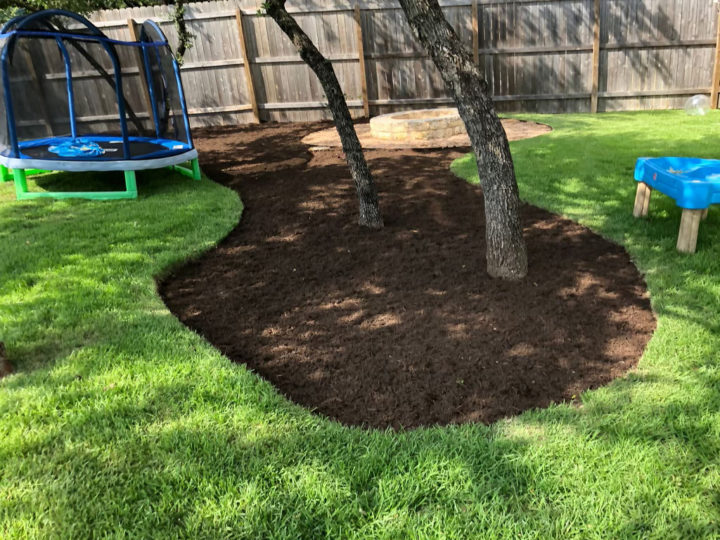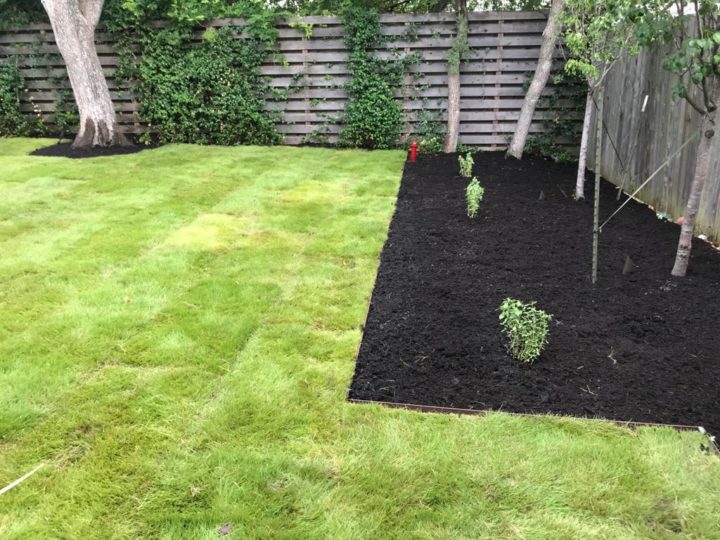St Augustine sod is a warm-season grass that is well-suited for the Central Texas region due to its tolerance for Texas weather. It’s a thick, lush grass that creates a dense turf. It grows in “Stolons” which are the above ground runners that some people think look like large centipedes. There are different types of St Augustine sod, each with its own set of benefits and downsides.

Is St Augustine grass right for your yard?
St Augustine is a great turf type, but it does require a lot of water to thrive. Some HOAs may not allow it to be planted for this reason. In addition to water, St Augustine sod also requires regular maintenance, such as fertilization and irrigation, to keep it healthy.
One way to reduce the maintenance required for St Augustine sod is to cut it taller. This allows the grass to grow deeper roots, which can help it to better withstand drought conditions. Cutting it at a height of 2.5-3.5 inches can also help to shade the soil, which can help to reduce evaporation and retain moisture.
One popular grass variety is Palmetto, which is a slower-growing grass that requires less maintenance than other types. It’s also more tolerant of cold weather, making it a great choice for Central Texas homeowners who want a low-maintenance lawn that can withstand the occasional freeze. Additionally, Palmetto does well in shadier areas, although it still needs 3-6 hours of direct sun, depending on the conditions.

In summary, St Augustine sod is a great choice for Central Texas homeowners who want a lush, green lawn that can tolerate hot, dry weather. Palmetto is a popular variety that is low-maintenance and tolerant of cold weather and shade, but it does require a lot of water to thrive. If you do choose to plant St Augustine sod, be sure to keep up with the necessary maintenance, including regular watering and cutting it taller.
How to install St Augustine sod
So you’re thinking about laying down some fresh St Augustine sod, huh? Well, we’ve got some tips to help you increase your chances of success, approved by the Top Choice team!
- Prepare: First things first, you need to prepare the ground properly. Don’t even think about skipping this step, trust us. Remove that old turf, and level out the area. Then, put down some high-quality soil. You can learn more about that on our top dressing page.
- Select your grass: Next up, choose your sod wisely. There are a few different types that work well in Austin, but some are better suited for sunny or shady spots than others. Check out our guide to Central Texas sod types to make the right call.
- Measure: Before you buy your sod, make sure to measure your area. A pallet of sod will usually cover about 450 square feet, but don’t forget there will be some waste and parts that need to be discarded. Plan to get an extra half pallet just in case.
- Buy: When it comes time to purchase your sod, places like Home Depot only sell certain types of sod “by the piece” in the spring. For larger quantities year-round, we recommend checking out vendors like Daniel Stone and King Ranch Turf Grass.
- Install: When you’re laying the sod, you too can do it like a pro. Place each piece down like bricks, with one seam directly in the middle of the piece next to it. Keep those seams tight for a seamless finish!

Watering new St Augustine grass
Watering is critical for the establishment of new grass sod after installation. Here are some general guidelines for watering new grass sod:
- Water immediately after installation: As soon as the sod is installed, water it thoroughly to help it settle into the soil and reduce stress on the grass roots.
- Water frequently for the first two weeks: During the first two weeks after installation, the sod needs to be kept consistently moist. Water it every day, or even twice a day if the weather is hot and dry. The goal is to keep the soil moist to a depth of 4 to 6 inches.
- Gradually reduce watering frequency: After the first two weeks, you can start to reduce the frequency of watering. Water deeply once or twice a week, depending on the weather and the type of soil. Make sure that the soil is moist to a depth of at least 6 inches.
- Water early in the morning: Watering early in the morning is the best time to water new grass sod. This allows the water to penetrate deeply into the soil before the heat of the day evaporates it.
- Avoid overwatering: Overwatering can be just as harmful as underwatering. Make sure that the soil is moist, but not soggy. If the soil is too wet, it can lead to root rot and other problems.
Want some help?
At the end of the day, should you DIY? Filling in a few dead spots can make for a decent weekend project, but sodding bigger sections of your yard can be a serious undertaking. And remember, good preparation is definitely the hardest part. Laying squares of sod isn’t bad, but tearing out old turf and preparing your soil takes some serious elbow grease.
Let us know if you’d like us to take care of it, and we’d be happy to get you a fast free quote!

